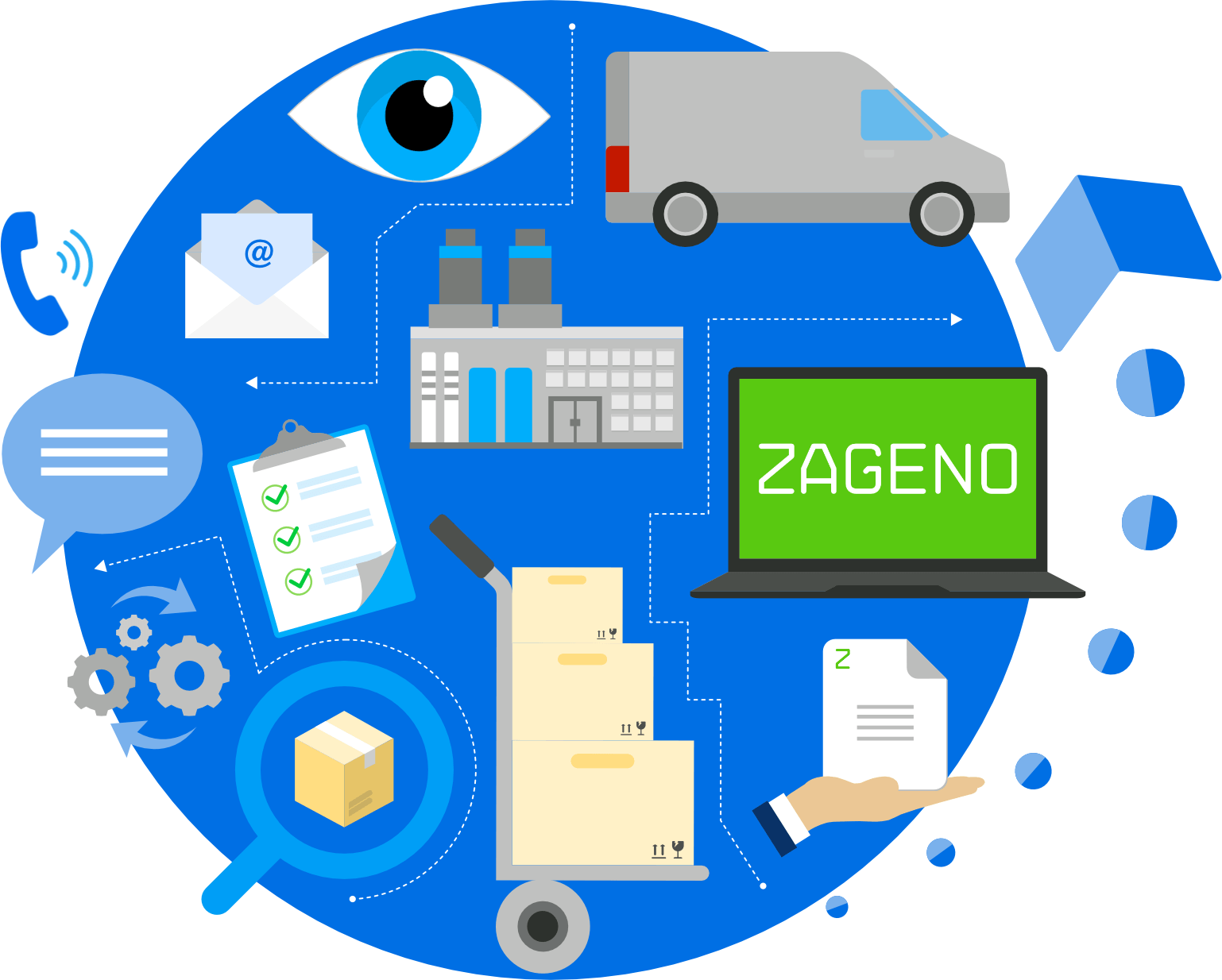In today’s B2B world, listing your products on a digital marketplace just makes sense—especially for life sciences. Lab supply marketplaces have become a go-to solution for lab managers and scientists looking for an easier, faster way to get the lab supplies they need. When it comes to the question of why vendors should join a digital marketplace, the real question to ask is, “Why not?”
How digital marketplaces make life easier for labs
Leading life sciences digital marketplaces, such as ZAGENO, provide an Amazon-like shopping experience, tailored for labs. They’re a one-stop shop where lab managers and scientists can find everything they need, from equipment to materials, in an intuitive, streamlined way that automates and shortens the purchasing cycle.
Labs accessing lab supply marketplaces experience:
- Faster orders: Labs get what they need more quickly, keeping research on track.
- Reduced errors: Automation cuts down on mistakes that can slow things down.
- Convenience: All the products labs need, all in one place.
- Improved supplier relationships: The obstacles to purchasing from new suppliers are removed, making it easier to discover new brands.
- Streamlined invoicing: Consolidated billing simplifies financial management.
By making the ordering process so much easier, digital marketplaces free up scientists to focus on their work instead of worrying about logistics.
Why suppliers love digital marketplaces
For suppliers, digital marketplaces are more than just a tool, they’re a smart way to grow your business. Here’s what makes them so valuable:
- New sales channel: Reach customers without needing to invest in sales and marketing.
- Wider reach: Connect with a broader audience, including niche buyers looking for specialized products.
- Level playing field: Compete with bigger companies without the massive budget.
- Simpler operations: Automate processes and spend more time growing your business.
When you make your products available on a digital marketplace, it shows labs that you’re ready to meet their needs head-on.
Book a call with ZAGENO’s supplier team
4 reasons suppliers should join a digital marketplace
- Reach more customers, more easily. Digital marketplaces are like magnets for lab managers and scientists. They bring everyone together in one place, so suppliers can:
- Showcase products to a wide range of buyers.
- Find and serve niche customers, like those needing hard-to-find chemicals or specialized equipment.
It’s like being at a global trade show—accessible 24/7, without leaving your office.
- Get discovered by new customers. Lab managers and scientists are busy, and they don’t have time to scour the web for suppliers. Digital marketplaces make it easy for them to
- Compare prices and features without hassle.
- Discover suppliers they might not have worked with before.
For smaller suppliers, this is your opportunity to meet customers where they’re already shopping.
- Make your products easy to find. Search tools, especially those powered by AI, are a huge advantage to suppliers selling on digital marketplaces. Labs can find exactly what they need and discover suppliers they wouldn’t have otherwise. This is especially important when:
- Supply chains are tight: Labs need alternatives when their usual suppliers run out.
- Brand loyalty is flexible: Labs are open to trying new brands if their needs are met.
- Specialized products are required: Protocols often demand specific items that only niche suppliers can provide.
Being easily searchable makes your products more accessible—a win for both you and your customers.
Learn More: How AI Is Improving The Life Sciences Customer Buying Journey
- Stay competitive in a changing industry. The lab supply industry is shifting fast, with consolidations and heightened competition. Digital marketplaces help smaller suppliers:
- Stand out against bigger players.
- Highlight their unique products and features.
Listing on a marketplace keeps you relevant and visible, no matter how the industry shifts
Why now is the time to join a lab supply marketplace
The lab supply industry is growing like never before. Here’s what’s happening:
- Booming market: The lab supplies market is expected to grow from $39.2 billion in 2024 to $67.43 billion by 2031. That’s a lot of opportunity for suppliers ready to adapt.
- Tech innovation: With automation and AI transforming labs, suppliers need to keep up. Digital marketplaces are part of that transformation.
- Diagnostics on the rise: Labs are running more tests than ever, and they need reliable suppliers to keep up with demand.
- Biopharma consolidation: Big companies are teaming up, but digital marketplaces give smaller suppliers a fighting chance to compete.
Getting started with a digital marketplace
You’re just one click away from thousands of scientists. ZAGENO connects scientists with over 40 million products from over 5,300 global brands, and yours could be one of them. ZAGENO suppliers enjoy:
- Expanded market reach
- Fully automated order flow
- Full brand control
- Real-time analytics and visibility
- Increased new sales and business opportunities
Ready to take the next step?
Partnering with a platform like ZAGENO not only simplifies operations but also helps you connect with more customers and stay competitive. Getting started is easy.







